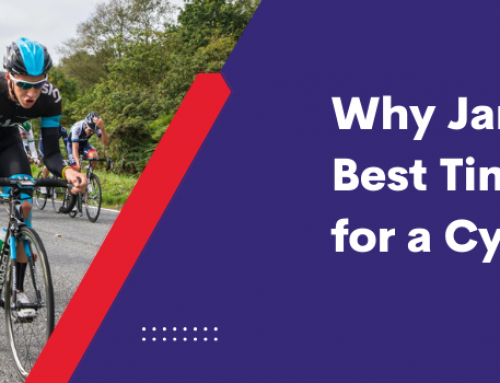A charity bike ride is a great way to raise money while doing something incredible for your body and your mind. Whether you’re an avid cyclist or you’ll be hopping back on your bike for the first time in years, there’s so much enjoyment to be found in cycling.
A charity bike ride will typically include a long distance ride, or it might be a particularly scenic ride with uphill challenges. You could opt for a multi-day event, such as cycling from Land’s End to John o’Groats. Or you could opt for a single day event, such as cycling from London to Brighton.
When you’re cycling for charity, you can’t just head out on a whim. You need to be organised in order to maximise the fundraising possibilities. It also helps to make sure that you have the right equipment to make sure your charity bike ride goes off without a hitch.
Here are our top tips for organising your own charity bike ride…

Find your motivation
First things first, you need to uncover your motivation. This is an essential step, as it will help to keep you on track. You might find it difficult to keep working towards a singular goal if you are lacking in focus. By uncovering the reason for wanting to complete a charity bike ride, you can ensure you stay the course.
Common reasons for embarking on such a challenge include:
- A personal interest in raising money for a particular charity, such as in memory of someone you have lost.
- An interest in getting fit and challenging yourself physically.
- A desire to give something back.
- Looking for connection in the world.
Once you know your reason for embarking on this challenge, you can return to this time and time again to ensure you stay on track, even when you’re training in poor weather.
Choose your charity partner
If you know who you want to raise money for, this step will be easy and may already be completed. Otherwise, do some research into charities that are actively raising money and involved in causes that are important to you.
Dig deep and think about what causes are important to you and to your loved ones. Raising money for a charity close to your heart will help you to feel a greater sense of purpose. It can also spur you on to put more effort into the fundraising part.

Get the right gear
If you’re already a cyclist, you might have some of the equipment you need already, but there could be some bits missing from your kit. First things first, you need to make sure that your bike is up to the task.
Your bike could slow you down and make the challenge harder than it needs to be, so it’s worth arranging a bike service to make sure everything is working as it should. If you’re joining an established bike challenge, there may be bike mechanics along the route, so you can pack minimal tools. But if you’re venturing out alone, you’re going to need a bike repair kit.
You should also think about all-weather clothing so that you’re prepared for anything. Wind, rain and sun will be your main concerns. Finally, think about how you will fuel your ride. You’ll need enough water and snacks to keep you going. You should also think about how you might replenish these along the route.
Start your training
You can’t just launch into a long distance cycle and hope for the best. You need to train so that you can be confident you will finish the challenge. Your sponsorship will depend on you finishing the course, so don’t skip this step.
Training for the event is often a perk of long distance cycling. This is where the health benefits become most evident. Create a training plan that will gradually build up the distance cycled and increase your cardiovascular capacity and endurance.
Give yourself at least 3 months to train for your long distance cycle challenge to make the most of the benefits. You’ll need longer if you are not already in pretty good shape. You can also incorporate additional workouts, such as strength training and flexibility to help ensure you are physically fit and ready for the challenge.

Build a team
Completing a challenge alone is an incredible feat, but you’ll be even more satisfied with the outcome if you are able to cycle alongside friends, family or colleagues. Building a cycling team will help you to stay motivated as you’ll be able to lean on others for encouragement and inspiration.
It’s also a simple way to make the actual cycling part more fun. Rather than cycling alone in silence with only the scenery to keep you company, you can benefit from
Spread the word
When the whole point of a charity bike ride is to raise money for charity, you need to make sure you’re spreading the word far and wide. You can use tools like social media to get the word out and use an online platform like Just Giving to manage your donations.
This is one of the best ways to remain compliant with fundraising rules and to give people confidence that your fundraising efforts are legitimate. While your close friends and family will know that you have the best intentions, if you are planning to expand your reach and ask more people for support, they may need some extra reassurance.
Final thoughts on organising your own charity bike ride
As you can see, there’s a lot that goes into a charity bike ride. This is why many people will choose to join an organised race, so all they have to do is show up and cycle. The London to Brighton cycle challenge is a great example of an organised bike challenge where everything has been thought of in advance. All you need to do is show up with a can-do attitude and complete the race to help raise money for your chosen charity.







Leave A Comment